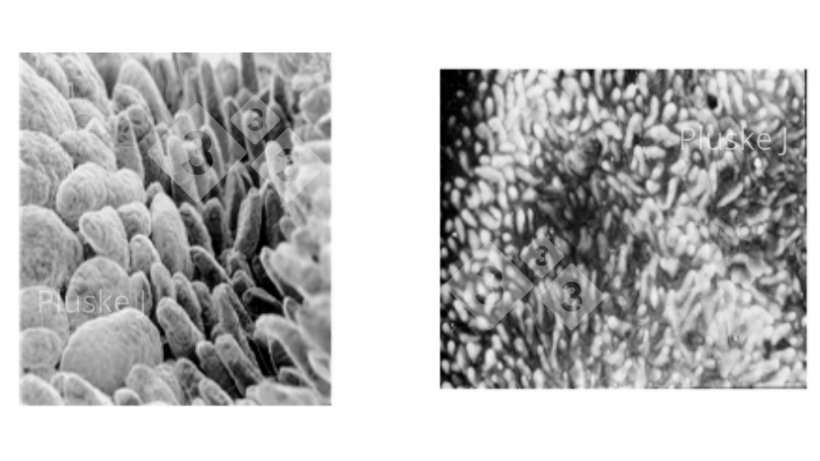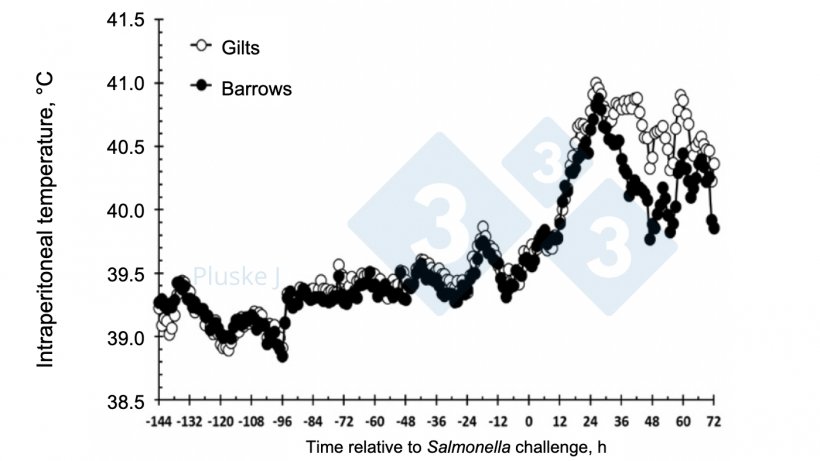Young, weaned piglets will normally experience nutritional, psychosocial and environmental changes associated with production practices including diet change, separation from their dam, mixing of non-littermate piglets, moving/transport, and (or) changed temperature and air-quality parameters. These (usually) abrupt, simultaneous challenges (stressors) generally not only cause reduced voluntary feed intake and growth rate after weaning, but can have significant detrimental impacts on gastrointestinal tract (GIT) structure and function (Figure 1). The post-weaning malaise can compromise disease status and immune function, and therefore pig health and welfare, and can have life-long consequences for some piglets in terms of their subsequent performance, survival, disease state and responses to stressors experienced later in life. Improvements in nutrition, housing and the environment, health and management have minimised some of the adverse effects of weaning stress, but nonetheless, weaning under most commercial conditions remains a major production penalty, with the specific mechanisms governing susceptibility to stress-induced GIT functionality and its consequences for growth and disease remaining inadequately understood.

Naturally, we want to ease the burdens on piglets of weaning as much as possible. The main factors that need to be addressed to help piglets transition as smoothly as possible from their lactation environment to their post-weaning environment include:

- Physical environment (e.g., proper disinfection and drying procedures)
- Temperature (keeping newly-weaned pigs in their thermoneutral zone, 28-30° C immediately after weaning)
- Nutrition and feed transition (e.g., pre-weaning feed familiarisation, form and type of feed offered, feed and water presentation)
- Grouping/social structure (e.g., correct stocking density)
- Health management (e.g., observing signs of poor health, or impending poor health, determines appropriate corrective action(s)).
In particular, lighter/smaller piglets at weaning require additional attention and care as they will most likely struggle more – but not all the time - to adapt to weaning.
These factors are well recognised and by and large, producers will implement them to reduce the magnitude of the negative effects weaning has on production. However, these practices won’t necessarily prevent events such as fighting (to establish social hierarchy), low and variable feed intake, and disease after weaning. These influences are now well implicated in stress-induced perturbations of the GIT, including hyperexcitability of the enteric nervous system, inflammatory cell activation and release, increased GIT permeability, and (or) diarrhoea (as a result). Indeed, study of the ‘gut-brain axis’ has revealed the profound impacts stress can have on the signalling that occurs between the GIT and central nervous system, implicating close relationships between GIT structure and function, the enteric nervous and mucosal immune systems, and the microbiome. Links to the age of the piglet at weaning, sexual dimorphism and pre-weaning factors have also been established, and further understanding of these underlying mechanisms may assist in practical strategies to further reduce the challenges of weaning.
Evidence in young pigs now indicates that stressful events earlier in life causes earlier onset of GIT dysfunction that can have life-long harmful consequences. In general, piglets weaned less than about 20 days of age showed augmented maladaptation to the weaning processes compared to piglets weaned at older ages. This begs the question of what is the most appropriate weaning age under today’s conditions of commercial production? Building on work from Main and colleagues in the early 2000s, Faccin and colleagues studied the effects of increasing weaning age (litters weaned at 19, 22, 25, or 28 days of age) on pig performance to slaughter and belly nosing prevalence in a commercial multisite production system in Brazil. The results of the study showed that increasing the weaning age improved overall performance (Table 1), and although lifetime performance was not affected by the weaning age range studied, the consistent positive effects in the nursery and the increase in the number of pigs reaching market enabled by a lower removal rate, also in the nursery, implied that 25 days was the optimal weaning age. These data support earlier French work by Colson and colleagues showing that weaning piglets at 21 days had more negative consequences on growth rate and stress endocrine responses than weaning at 28 days, although behavioural disturbances existed in both weaned groups.
Table 1. Influence of weaning age on the weight sold per pig weaned1 in three market scenarios (after Faccin et al., 2020).
| Item | Weaning age, d | Probability, P < | |||||
|---|---|---|---|---|---|---|---|
| Weight Sold/pig weaned scenario | 19 | 22 | 25 | 28 | SEM | Linear | Quadratic |
| Fixed day, kg2 | 102.8 | 109.0 | 118.0 | 120.6 | 2.73 | <0.001 | 0.266 |
| Fixed age, kg3 | 112.1 | 115.1 | 121.1 | 120.6 | 2.84 | <0.001 | 0.286 |
| Fixed weight, kg4 | 121.1 | 125.2 | 128.1 | 129.0 | 1.32 | <0.001 | 0.137 |
1Weight sold per pig weaned = (final BW * final number of pigs per pen)/Number of weaned pigs needed to fill one finishing pen.
2Fixed day: the final BW at 94 d after housing in the finishing facilities.
3Fixed age: all treatments achieving 164 days of age.
4Fixed weight: all treatments achieving 135 kg of market BW.
BW = body weight.
As time goes on and tools for alleviating health and disease in the nursery become more limited, we are seeing more and more producers extend their average weaning age in accordance with a more mature and functional GIT, that assists with the post-weaning transition.
Another question is that of weaning age versus weaning weight, with the general feeling being that a heavier piglet at the same weaning age can better handle post-weaning stressors; however, there are few studies examining this factor. It is recognised that placement strategies in the nursery can influence pig behaviour and production, especially the onset of feeding. Generally, weaning into variable versus uniform bodyweight groups has little to no effect on overall nursery performance, although pigs heavier at weaning of the same age seem to be impacted more negatively by the post-weaning challenges than lighter or medium weight pigs, possibly because they spend more time establishing a social hierarchy.
Biological sex has long been known as a significant risk factor for a number of diseases in people, therefore it is no surprise that there is also sexual dimorphism in young pigs. It is known in infants and other species that immune differences are present very early on in life, even during the prenatal stages, with female preterm neonates exhibiting a less severe disease course and improved prognosis in many pathological states compared to their male counterparts. In general, and although more research is still required, gilts show heightened nervous and immune activation, increased intestinal permeability and increased diarrhoea after weaning compared to their male counterparts, yet seemingly exhibit lower mortality rates than do barrows or boars. This suggests that the heightened GIT reactivity in females might confer an advantage over males for survival.
A study by Burdick Sanchez and others in which weaned gilts or barrows were infected with Salmonella typhimurium, it was reported that gilts had a greater intraperitoneal temperature response (Figure 2), greater lymphocyte and basophil counts, yet decreased haematocrit, platelets, total white blood cell, and neutrophil counts than barrows. Weaned gilts seemingly produced a stronger acute phase response to the challenge compared to barrows without effects on sickness behaviour or tissue translocation or shedding of Salmonella, indicating that managing gilts and barrows separately may have significant impacts on herd health management during the weaning/early post-weaning period.

More research is needed to determine whether sexual dimorphism in piglets could be exploited to commercial advantage, e.g., feeding sex-specific diets (assuming grouping by sex after weaning), examination of effects of probiotics and prebiotics on microbiota composition and function, disease outcomes and the immune system, but if repeatable effects can be achieved, then this may further help optimise whole-of-life functionality in both sexes.
The notion of ‘gut health’ is well and truly established for young pigs, but the underlying biological basis of many stress-related disorders in pigs is still relatively poorly understood. Further research will help to unravel further the many factors influencing pigs’ responses to stress such that further strategies can be put in place to reduce the negative impacts it has on production.





